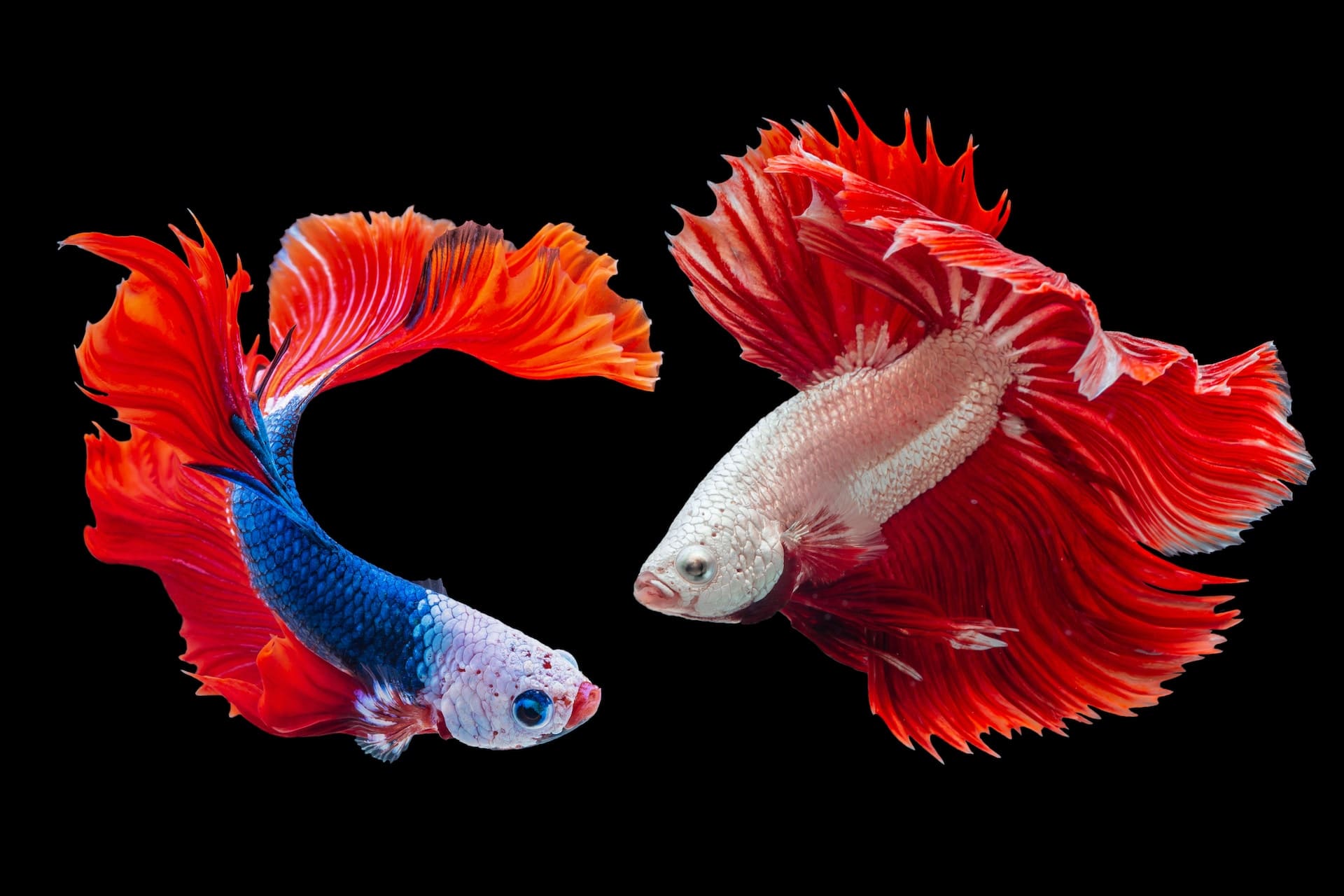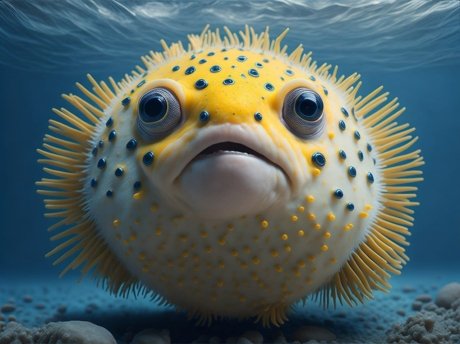Fighter Fish | Prices, 8 Types, Colours, Facts, Care Tips, Health Issues
Embark on a journey into the enchanting realm of Fighter Fish with our comprehensive guide. From their breathtaking colours to their intriguing behaviours, this exploration offers insights for beginners and seasoned enthusiasts alike. Dive into the captivating world of Fighter Fish care, habitat, and more, and discover how to create a thriving aquatic haven for these stunning companions.
Fighter Fish
Delving into the vibrant realm of underwater wonder, fighter fish stand as striking jewels in the aquatic kingdom. Their captivating colours and graceful movements have ensnared the attention of fishkeeping enthusiasts worldwide. In this article, we embark on a journey to explore the mesmerizing universe of fighting fish, unearthing their origins, care requirements, and the sheer joy they bring to hobbyists.

Origin and History: Originating in Southeast Asia, fighter fish, scientifically known as Betta splendens, boast a rich history intertwined with ancient cultures. Tracing their roots to rice paddies and floodplains, these fish once survived in harsh conditions, evolving into the resilient and stunning creatures they are today. Their name “fighter fish” derives from their territorial nature, particularly the aggressive behaviours exhibited by males towards each other.
Varieties and Colors: Nature’s palette seems to have no bounds when it comes to fighter fish. From vivid blues and fiery reds to elegant whites and iridescent greens, these fish flaunt an extensive spectrum of colours. With their long, flowing fins and delicate finnage, fighting fish exhibit an array of fin types, further adding to their allure.
Habitat and Tank Setup: Creating a comfortable haven for your fighter fish involves replicating their natural habitat. A well-sized tank with ample hiding spots through live plants, caves, and decorations is vital. Temperature maintenance, water filtration, and regular water changes ensure a healthy environment for these tropical fish.
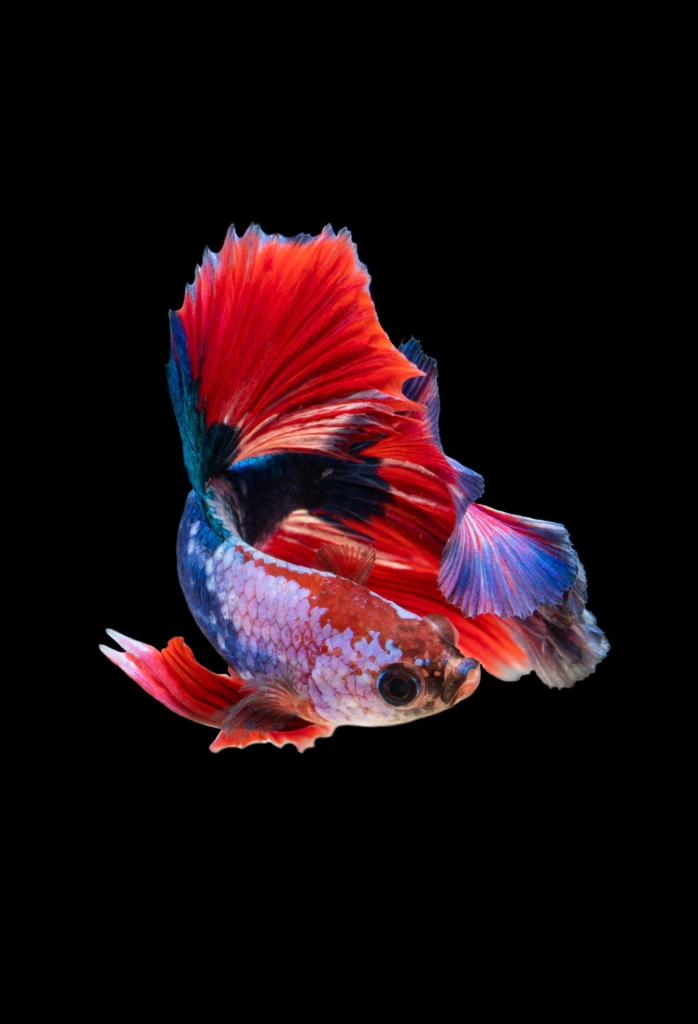
Feeding and Care: Nurturing your fighting fish extends beyond aesthetics; their well-being takes center stage. A balanced diet comprising high-quality pellets, frozen or live foods enriches their health. Regular feeding routines and portion control prevent overeating and maintain their vibrancy. Clean water, free from ammonia and nitrites, contributes to their longevity, promoting optimal health and vibrant colouration.
Breeding and Reproduction: The intricate dance of courtship and reproduction among fighting fish is a marvel to witness. Breeding setups involve carefully introducing the male and female, followed by elaborate nest-building rituals and bubble nests to shelter the eggs. Meticulous care is required during this phase, ensuring the safety of both parents and offspring.
Fighter Fish Baby

Fighter fish babies, delicate and miniature versions of their adult counterparts, bring a sense of wonder to the world of fishkeeping. These tiny aquatic beings require specialized care to ensure their healthy growth and development. Creating an environment with optimal water quality, appropriate nutrition, and safe hiding spots is crucial for their well-being. Monitoring their growth and providing gradual introductions to larger tanks as they mature is essential in helping them thrive.
Full Moon Fighter Fish
The Full Moon Fighter Fish, known for its majestic appearance, features fins that resemble the graceful arcs of a full moon. Maintaining the vibrancy of their colours and the elegance of their movements requires a well-balanced tank environment. Regular water changes, appropriate filtration, and a diet rich in high-quality pellets ensure their health and beauty shine through.
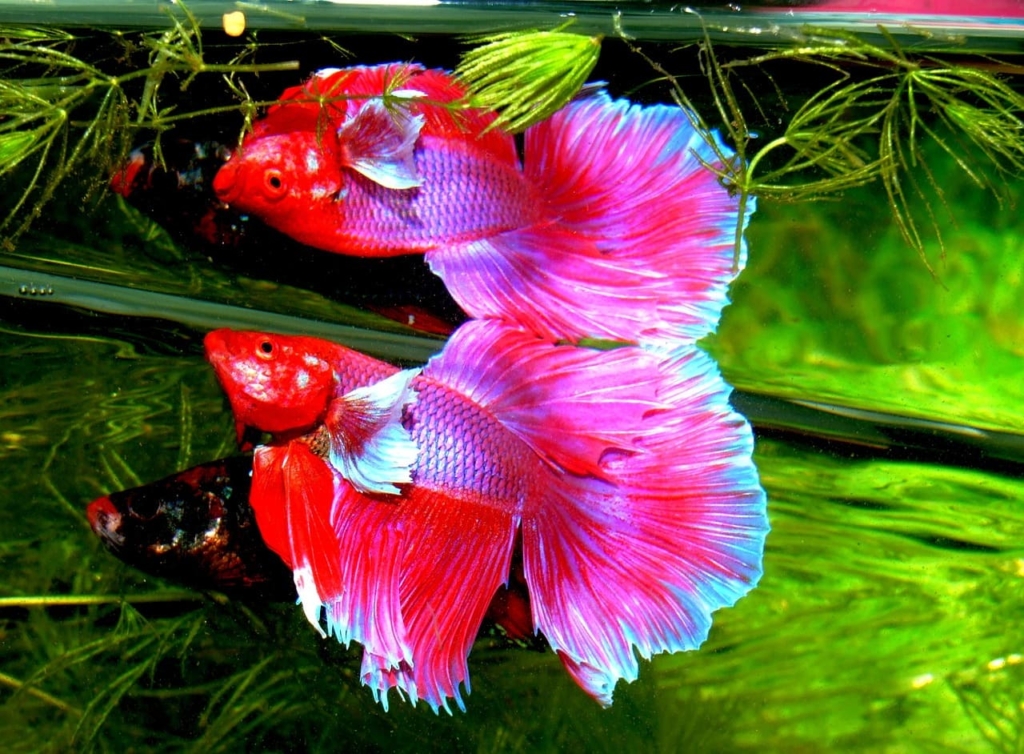
Beta Fighter Fish
Beta Fighter Fish, also known as bettas, are captivating aquatic creatures with a wide range of colours and fin shapes. Their unique personalities and territorial behaviours make them intriguing additions to aquariums. To ensure their health and happiness, providing them with appropriate tank size, temperature, and water conditions is crucial. A varied diet consisting of pellets, live foods, and occasional treats contributes to their vibrant colours and well-being.
Crown Tail Fighter Fish
Crown Tail fighting Fish stand out with their regal appearance, characterized by their spiky and serrated fins that resemble a crown. To maintain their striking finnage and overall health, keeping a clean and well-maintained tank is essential. Proper filtration and regular water changes help prevent water quality issues. Ensuring their diet includes high-quality pellets and live foods enriches their colouration and vitality.

Half Moon Fighter Fish
Half Moon Fighter Fish mesmerize with their unique finnage that opens up like a half-circle, creating a stunning display. Creating a stress-free environment with suitable tank mates and hiding spots is vital for their well-being. Providing a balanced diet and monitoring their behaviour helps ensure they remain healthy and active. Paying attention to water parameters and performing regular maintenance supports their vibrant colours and graceful movements.
Plakat Fighter Fish
The Plakat fighting Fish’s streamlined form and robustness set it apart. Their active nature demands space for swimming and exploring. Ensuring a well-furnished tank with live plants and hiding spots helps create a stimulating environment. Offering a diet rich in proteins and nutrients, along with maintaining water quality, supports their health and vitality. Regular observation helps identify any signs of distress or illness.

Beautiful Fighter Fish
The Beautiful Fighter Fish encompasses a variety of stunning types, each showcasing unique colours and patterns. Their captivating appearances require attentive care to keep their beauty intact. Providing suitable tank conditions, including temperature and water quality, is crucial. A balanced diet and regular feeding routines contribute to their vibrancy. Observing their behaviours and interactions helps ensure their overall well-being.
Best Fighter Fish
Selecting the Best Fighter Fish for your aquarium involves considering factors like size, compatibility, and personal preferences. Researching various varieties, such as the Nemo Candy fighting Fish or the Full Moon Elephant Ear fighting Fish, can guide your choice. Tailoring tank conditions, diet, and social interactions to their specific needs helps ensure they flourish and become focal points of your aquatic landscape.
Big Fighter Fish
Big Fighter Fish, with their impressive size and commanding presence, require spacious tanks that accommodate their active nature. Monitoring water parameters and performing regular maintenance is crucial to prevent water quality issues. Offering a varied diet and maintaining a suitable temperature range supports their overall health. Creating an environment that allows them to exhibit their natural behaviours ensures their well-being.
Elephant Ear Fighter Fish

Elephant Ear Fighter Fish stand out with their unique fins resembling delicate elephant ears. Providing a tank with ample swimming space and hiding spots is essential for their comfort. A balanced diet of high-quality pellets and live foods contributes to their well-being. Monitoring water conditions and performing regular water changes maintains their health and enhances their natural colours.
Galaxy Fighter Fish
The Galaxy Fighter Fish’s intricate patterns evoke the splendor of the cosmos. To keep their unique appearance vibrant, maintaining a clean tank and stable water parameters is essential. A diet rich in proteins, along with appropriate lighting, supports their colouration. Creating an environment with suitable plants and decorations enhances their well-being, allowing their celestial beauty to shine.
Rainbow Fighter Fish
Rainbow Fighter Fish, with their multi-hued finnage, create a spectacular display of colours in any tank. Providing a stress-free environment with proper tank mates is crucial for their happiness. A well-balanced diet and regular feeding routines ensure their vibrant colours remain vivid. Monitoring water quality and performing regular maintenance supports their overall health and vitality.
Rare Fighter Fish
Rare Fighter Fish captivate with their limited availability and distinctive features. Ensuring their tank conditions mimic their native habitat is essential for their well-being. Offering a diet tailored to their needs and preferences supports their health and vitality. Regular observation and interaction help maintain their unique appearance and behaviours, ensuring they remain the treasured gems of your aquarium.
Dragon Fighter Fish
Dragon Fighter Fish, with their intricate patterns reminiscent of mythical creatures, require attentive care to preserve their unique appearance. Providing appropriate tank conditions and maintaining water quality prevents stress and illness. Offering a varied diet and observing their interactions contribute to their overall health and vitality. Creating a stimulating environment with suitable decorations and plants enhances their well-being.

Full Moon Elephant Ear Fighter Fish
The Full Moon Elephant Ear Fighter Fish combines the majesty of its fins with the whimsy of its elephant-like ears. Creating an environment that accommodates their unique features and behaviours is essential. Offering a varied diet and maintaining water quality supports their health and colouration. Regular observation and interaction help ensure their well-being, allowing their elegance to flourish.
Imported Fighter Fish
Imported Fighter Fish bring a piece of distant waters to your tank, each variety adding diversity and beauty. Researching their specific requirements and habitat conditions is crucial for their well-being. Tailoring tank parameters, diet, and social interactions to their needs helps ensure a smooth transition. Monitoring their adaptation and providing appropriate care supports their health and happiness.

Nemo Candy Fighter Fish
The Nemo Candy Fighter Fish’s vibrant colours and patterns resemble sugary treats, creating a visual delight in any aquarium. Providing suitable tank conditions and a varied diet supports their well-being and colouration. Regular water changes and maintenance contribute to their health and overall appearance. Observing their behaviours and interactions ensures their happiness and vibrant presence.
Candy Fighter Fish
Candy Fighter Fish captivate with their colours and patterns reminiscent of delightful confections. Maintaining a clean tank and stable water conditions ensures their health and appearance. Offering a varied diet tailored to their needs supports their well-being and vitality. Creating an environment with suitable decorations and plants enriches their surroundings, turning your tank into a visually appealing display.
Male Fighter Fish
Male Fighter Fish showcase a range of colours and fin shapes that contribute to their allure. Providing an environment with suitable tank mates and hiding spots prevents stress and aggression. A balanced diet and regular feeding routines ensure their health and vibrant appearance. Monitoring their behaviours and interactions helps maintain their happiness and well-being.

Female Fighter Fish
Female Fighter Fish possess a grace and elegance that make them captivating additions to any tank. Creating a stress-free environment with proper tank conditions is essential for their comfort. Offering a varied diet and observing their behaviours supports their health and vitality. Monitoring their interactions and providing suitable social dynamics contributes to their overall well-being.
Piranha Fish Vs Fighter Fish
Comparision and differences between Piranha Fish and Fighter Fish:
| Aspect | Piranha Fish | Fighter Fish |
|---|---|---|
| Family | Characidae | Osphronemidae |
| Origin | South America, mainly Amazon and Orinoco basins | Southeast Asia, primarily Thailand and Cambodia |
| Size | Varies, typically 6 to 10 inches (15 to 25 cm) | Varies, usually 2 to 3 inches (5 to 8 cm) |
| Aggression | Highly aggressive, known for their sharp teeth | Can be aggressive, especially males, but varies by type |
| Behavior | Predatory, often hunt in groups | Territory-based, males can be territorial and aggressive |
| Diet | Carnivorous, feed on fish and other prey | Carnivorous, eat insects, larvae, and small aquatic life |
| Tank Setup | Require large tanks with ample hiding spots | Smaller tanks with plants and hiding spots |
| Swimming Style | Swift and powerful | Graceful and elegant |
| Wide range of vibrant colours and patterns | Typically silver with a red belly | Behaviour |
| Popular Types | Red-bellied piranha, black piranha, etc. | Halfmoon, crowntail, plakat, veil tail, etc. |
| Tank Mates | Often kept alone due to aggression | Can be kept with other peaceful community fish |
| Popularity | Infamous due to media portrayals | Popular among fishkeeping enthusiasts |
8 Types Of Fighter Fish
When it comes to the mesmerizing world of fighter fish, diversity is the name of the game. These aquatic gems come in a myriad of colours, fin shapes, and personalities that cater to the tastes of fish enthusiasts far and wide. Let’s dive into the enchanting world of fighting fish types, where each variety tells a unique story.
- Halfmoon Betta: Imagine a fish with fins that open up like a regal fan, creating a perfect half-circle. That’s the captivating halfmoon betta. Renowned for their majestic appearance, these fish boast fins that can stretch to an impressive 180 degrees, creating a breathtaking display that captivates anyone who lays eyes on them.
- Crowntail Betta: Meet the rebel of the fighting fish world – the crowntail betta. Their defining feature is their spiky, serrated fins that resemble a crown, giving them an edgy and fierce appearance. With a flair for drama, these fish have a unique charm that sets them apart.
- Plakat Betta: If you prefer a fighter fish with a more streamlined and compact look, the plakat betta might steal your heart. Known for their shorter fins and robust bodies, these fish embody strength and vigor. Plakats often display vivid colours and are a favourite among those who appreciate their more practical form.
- Veil Tail Betta: For those who adore elegance and simplicity, the veil tail betta offers a timeless beauty. With elongated, flowing fins that taper to a delicate point, these fish exude grace and sophistication. Their gentle demeanour and graceful movements make them a popular choice among fishkeepers.
- Delta Tail Betta: The delta tail betta strikes a balance between the flamboyance of the halfmoon and the understated elegance of the veil tail. Their fins create a “D” shape that showcases a subtle yet captivating display. Deltas come in an array of colours, allowing enthusiasts to enjoy their vibrant charm.
- Double Tail Betta: Unveiling a double dose of charm, the double tail betta showcases a unique and stunning trait – not one, but two tails! Their split caudal fin creates a symmetrical appearance that’s truly eye-catching. These fish come in a variety of colours, making them a popular choice for those seeking a distinctive addition to their tank.
- Rosetail Betta: If you’re seeking a fighter fish that’s a work of art in motion, the rosetail betta is a masterpiece to behold. Their extravagant fins overflow with ruffles and waves, creating a mesmerizing display that resembles the petals of a rose. These fish are a testament to the endless variety of beauty found in the aquatic world.
- Wild Type Betta: For the purists who appreciate the natural allure of fighting fish, the wild type bettas offer a glimpse into their ancestral origins. With colours and patterns reminiscent of their native habitats, these fish exhibit a unique charm that connects us to their evolutionary journey.
Fighter Fish Colors
The diverse palette of Fighter Fish colours adds a vivid and captivating dimension to the world of fishkeeping. Each hue represents a unique personality and charm, creating a visually stunning aquatic display. Ensuring optimal care is crucial in maintaining the vibrancy and health of these colourful aquatic companions.

Blue Fighter Fish
Blue Fighter Fish are a sight to behold with their serene and calming colouration. Creating an environment that highlights their shades of blue requires proper tank conditions and suitable lighting. A balanced diet rich in nutrients and regular maintenance ensures their health and colour intensity.
Black Fighter Fish
Black fighting Fish exude an air of mystery and elegance with their dark and dramatic appearance. Proper tank conditions and suitable decorations help emphasize their colouration. Providing a varied diet and maintaining water quality supports their health and intensity of black hues.
Red Fighter Fish
The fiery Red Fighter Fish commands attention with its vibrant and bold colouration. Creating an environment that showcases their red hues involves proper tank parameters and lighting. A balanced diet and appropriate care contribute to their health and intense red shades. Monitoring their behaviours and interactions ensures their happiness and the preservation of their striking appearance.
White Fighter Fish
White Fighter Fish epitomize purity and elegance with their clean and delicate colouration. Proper tank conditions and decorations that complement their appearance are essential. Offering a varied diet and maintaining water quality support their health and brightness of white hues.
Golden Fighter Fish
Golden Fighter Fish radiate a sense of opulence and beauty with their shimmering gold colouration. Providing an environment that enhances their golden hues requires proper tank conditions and suitable lighting. A balanced diet and regular care contribute to their health and intensity of gold shades.
Green Fighter Fish
Green Fighter Fish bring a touch of nature’s beauty to your aquarium with their lush and verdant colouration. Proper tank conditions and suitable decorations that complement their appearance are essential. Offering a varied diet and maintaining water quality support their health and the richness of green hues.
Yellow Fighter Fish
Yellow Fighter Fish brighten up any aquarium with their cheerful and sunny colouration. Creating an environment that accentuates their yellow hues involves proper tank parameters and lighting. A balanced diet and appropriate care contribute to their health and the vibrancy of yellow shades. Monitoring their behaviours and interactions ensures their happiness and the preservation of their captivating colour.
History of Fighter Fish
The history of Fighter Fish is steeped in cultural significance and ancient traditions. Originating in Southeast Asia, these fish were once bred for their fighting prowess and vibrant colours. Over time, their captivating beauty led to their popularity as ornamental fish. Understanding the historical journey of fighting Fish enriches our appreciation for their role in aquatic culture and the evolution of fishkeeping.
Appearance of Fighter Fish
The appearance of Fighter Fish is a testament to the marvels of nature’s design. From their intricate finnage to their vibrant colours and unique patterns, each variety showcases a distinct beauty. Their elongated bodies and graceful movements contribute to their elegance. Observing and appreciating their appearances is a captivating exploration of the rich diversity found in the aquatic world.

Temperament of Fighter Fish
The temperament of Fighter Fish, known for their territorial nature, adds an intriguing layer to their personalities. While females tend to coexist peacefully, males often display aggressive behaviours, especially towards their own kind. Understanding their social dynamics and behaviours allows fishkeepers to create environments that promote harmony and prevent stress.
Behaviour of Fighter Fish
The behaviour of Fighter Fish unveils a world of fascinating interactions and rituals. From the elaborate courtship dances of mating pairs to the construction of bubble nests, their behaviours offer insights into their natural instincts and adaptations.
Fighter Fish At Home Vastu
In Vastu Shastra, an ancient Indian architectural system, Fighter Fish hold symbolic significance. Placing a fish tank with fighting Fish in specific areas of the home is believed to bring positive energy and harmony. The flowing movements of these fish are thought to activate stagnant energies, creating a sense of balance and tranquility.
Fighter Fish Price
The price of Fighter Fish varies significantly, with factors such as type, colour, and finnage influencing the cost. In the United States, Fighter Fish prices can range from $5 to $30, while in India, prices generally span from INR 100 to INR 500.
Fighter Fish Price In United States
In the United States, the price of Fighter Fish can range from $5 to $30, depending on the fish’s type, colour, and finnage. Rare or unique varieties might command higher prices, while more common types can be found at the lower end of the spectrum.
Fighter Fish Price In United Kingdom
In the United Kingdom, Fighter Fish prices generally range from £5 to £20. The availability of different types may vary among local fish shops, specialized breeders, and online marketplaces.
Fighter Fish Price In Australia
In Australia, the cost of Fighter Fish can vary between AUD 10 to AUD 40. Imported or rare varieties might be priced at the higher end due to shipping and importation costs.
Fighter Fish Price In Singapore
Singapore, being a hub for aquarium enthusiasts, offers a range of Fighter Fish at prices typically ranging from SGD 10 to SGD 50. The diversity of species, along with the availability of imported varieties, contributes to the varying price points.
Fighter Fish Price In Thailand
As the native land of the Betta splendens species, Thailand offers a wide range of Fighter Fish at relatively affordable prices. Prices can start from THB 50 and go up to THB 500 or more for premium and rare varieties.
Fighter Fish Price In India
In India, Fighter Fish are often more affordable, with prices ranging from INR 100 to INR 500. The availability and pricing can differ based on the type of Fighter Fish, the city or region, and the local market conditions.
Fighter Fish Price in Kerala
In Kerala, the price of Fighter Fish can vary based on factors like type, colour, and availability. On average, Fighter Fish prices in Kerala can range from INR 50 to INR 500, with unique or rare varieties often commanding higher prices due to their distinct characteristics.
Fighter Fish Price in Bangalore
In Bangalore, the price of Fighter Fish depends on factors such as the type of fish, its colour, and its finnage. On average, Fighter Fish prices in Bangalore can range from INR 100 to INR 800, with specialized or imported varieties typically being priced at the higher end.
Fighter Fish Price in Chennai
In Chennai, the price of Fighter Fish is influenced by factors such as type, colour, and demand. On average, Fighter Fish prices in Chennai can vary from INR 50 to INR 500.
Fighter Fish Price in Kolkata
In Kolkata, Fighter Fish prices are influenced by factors such as type, colour, and the availability of different varieties. On average, Fighter Fish prices in Kolkata can range from INR 50 to INR 500.
Half Moon Fighter Fish Price
The price of Half Moon Fighter Fish varies based on its colour, finnage, and the specific market. Generally, these captivating fish can be found in the range of $10 to $40, depending on the quality and rarity of the individual.
Blue Fighter Fish Price
The price of Blue Fighter Fish can vary based on factors such as shade intensity, finnage, and availability. On average, these aquatic beauties are priced between $5 and $25, depending on their distinct blue colouration and quality.
Female Fighter Fish Price
The price of Female Fighter Fish is influenced by factors such as type, colour, and the market’s demand. On average, Female Fighter Fish can range from $3 to $15.
Black Fighter Fish Price
The price of Black Fighter Fish can vary based on its colour intensity, finnage, and overall quality. Generally, these fish are priced between $5 and $30, depending on their distinct black colouration and unique features.
Full Moon Fighter Fish Price
The price of Full Moon Fighter Fish varies depending on its finnage, colour, and overall appearance. On average, these striking fish can be found in the range of $10 to $40, with rare or premium variants commanding higher prices.
Fighter Fish Prices In Major Indian and USA Cities
Approximate Prices of Fighter Fish in major cities in India and the USA:
| City | Average Price Range |
|---|---|
| Price in Mumbai | 50 – 500₹ |
| Price in Delhi | 50 – 500₹ |
| Price in Bangalore | 100 – 800₹ |
| Price in Kolkata | 50 – 500₹ |
| Price in Chennai | 50 – 500₹ |
| Price in Hyderabad | 50 – 500₹ |
| Price in Pune | 50 – 500₹ |
| Price in Ahmedabad | 50 – 500₹ |
| Price in New York | $5 – $30 |
| Price in Los Angeles | $5 – $30 |
| Price in Chicago | $5 – $30 |
| Price in Houston | $5 – $30 |
| Price in Miami | $5 – $30 |
| Price in San Francisco | $5 – $30 |
| Price in Philadelphia | $5 – $30 |
| Price in Dallas | $5 – $30 |
Factors that Affect the Price of Fighter Fish
The cost of fighting Fish can be influenced by a variety of factors that contribute to their overall value and market price. These factors include:
- Colouration and Finnage: The intensity and vibrancy of a fighting Fish’s colours, as well as the complexity of its finnage, can significantly affect its price. Fish with striking and well-defined colours or elaborate fin shapes tend to be priced higher.
- Genetics and Lineage: The genetic lineage of a fighting Fish can impact its quality and appearance. Fish with strong genetic traits that ensure consistent and vibrant colours are often more valuable.
- Size: The size of the fighting Fish also plays a role in determining its price. Larger, more mature fish may command higher prices due to their advanced growth and development.
- Age: The age of the fighting Fish can influence its price. Younger fish may be priced lower, allowing enthusiasts to watch them grow and develop over time.
- Breeder Reputation: fighting Fish bred by reputable and skilled breeders often come with a higher price tag. Breeders with a track record of producing high-quality fish are more likely to command premium prices.

Monthly Maintenance Cost of Fighter Fish:
The monthly maintenance cost of keeping fighting Fish involves various expenses to ensure their health and well-being. These costs include:
- Aquarium Setup: The initial setup cost includes the aquarium tank, filter, heater, substrate, decorations, and lighting.
- Water Conditioners: Products to treat tap water and maintain the proper water parameters.
- Food: High-quality fish pellets, live or frozen foods, and supplements for a balanced diet.
- Water Testing Kits: Kits to monitor water parameters such as pH, ammonia, nitrite, and nitrate levels.
- Electricity: Costs for running the aquarium equipment, including filters, heaters, and lighting.
- Aquarium Maintenance: Costs associated with regular water changes, filter media replacement, and cleaning supplies.
- Healthcare: Potential costs for medications, treatments, and preventive measures to maintain fish health.
- Miscellaneous: Expenses for any additional equipment, decor upgrades, or unforeseen circumstances.
Facts about Fighter Fish
Some interesting facts about Fighter Fish:
- Scientific Name: fighting Fish, scientifically known as Betta splendens, belong to the gourami family (Osphronemidae). They are native to the shallow waters of Southeast Asia.
- Labyrinth Organ: fighting Fish possess a unique labyrinth organ that allows them to breathe atmospheric air. This adaptation enables them to survive in oxygen-depleted waters by breathing directly from the surface.
- Distinctive Colors: fighting Fish are renowned for their stunning colours and patterns. They come in various shades, including red, blue, black, white, and metallic hues, making them popular choices for aquarium enthusiasts.
- Aggressive Behavior: Male fighting Fish are known for their territorial and aggressive nature, especially towards other males. This behaviour led to their common name, as they were historically bred for fighting.
- Bubble Nests: Male fighting Fish are skilled bubble nest builders. They create intricate nests on the water’s surface using bubbles and saliva to house their eggs. Once the nest is ready, they entice females to lay eggs in it.
- Parental Care: Male fighting Fish are also responsible for guarding and caring for the eggs and fry (baby fish). After fertilization, the male gathers the eggs into the nest and safeguards them until they hatch.
- Variety of Fins: fighting Fish exhibit a range of fin shapes, including Half Moon, Crown Tail, Plakat, Double Tail, and more. These fin variations contribute to their unique appearance.
- Solitary Lifestyle: In the wild, fighting Fish are typically solitary creatures. They inhabit small bodies of water like rice paddies, where they establish their territories and defend them fiercely.
- Natural Habitat: fighting Fish are commonly found in warm waters with temperatures ranging from 75 to 85°F (24 to 29°C). They inhabit slow-moving waters, rice fields, and swamps.
- Aquarium Size: Keeping fighting Fish in appropriately sized tanks is crucial for their well-being. While they can survive in small spaces due to their labyrinth organ, it’s recommended to provide at least a 5-gallon tank for their comfort.
Pros and Cons of Fighter Fish
Some pros and cons of keeping fighting Fish:
| Pros of Keeping fighting Fish | Cons of Keeping fighting Fish |
|---|---|
| 1. Aggressive Behavior: Male fighting Fish can display territorial and aggressive behaviour, especially towards other males. This can lead to injuries or stress if not managed properly. | 1. Aggressive Behavior: Male fighting Fish can display territorial and aggressive behaviour, especially towards other males. This can lead to injuries or stress if not managed properly. |
| 2. Unique Fin Shapes: fighting Fish come in a variety of fin shapes, such as Half Moon, Crown Tail, and Plakat, adding diversity to your aquatic display. | 2. Limited Tank Mates: Selecting compatible tank mates can be challenging due to fighting Fish’s aggressive tendencies. Peaceful, non-fin nipping species are the best choices. |
| 1. Captivating Colors: fighting Fish are known for their vibrant and stunning colours, making them visually appealing additions to aquariums. | 3. Specialized Care: fighting Fish require specific tank conditions, including proper water temperature, filtration, and appropriate hiding spots, which may be more demanding for beginners. |
| 4. Low Space Requirements: Due to their labyrinth organ, fighting Fish can thrive in smaller tanks, making them suitable for hobbyists with limited space. | 4. Health Issues: If not provided with optimal conditions, fighting Fish can be susceptible to health problems such as fin rot, ich, and stress-related illnesses. |
| 5. Bubble Nests and Breeding: Male fighting Fish build intricate bubble nests and exhibit parental care, making them interesting to observe during breeding. | 5. Female Compatibility: In some cases, keeping multiple female fighting Fish together can lead to aggression and dominance disputes. |
| 3. Interactive Behavior: Observing their behaviours, bubble nest building, and interactions with other fish can provide entertainment and engagement for hobbyists. | 6. Short Lifespan: fighting Fish have a relatively short lifespan, usually around 2-3 years, which can be disappointing for long-term fishkeepers. |
Fighter Fish Images
15 Beautiful Fighter Fish Images:

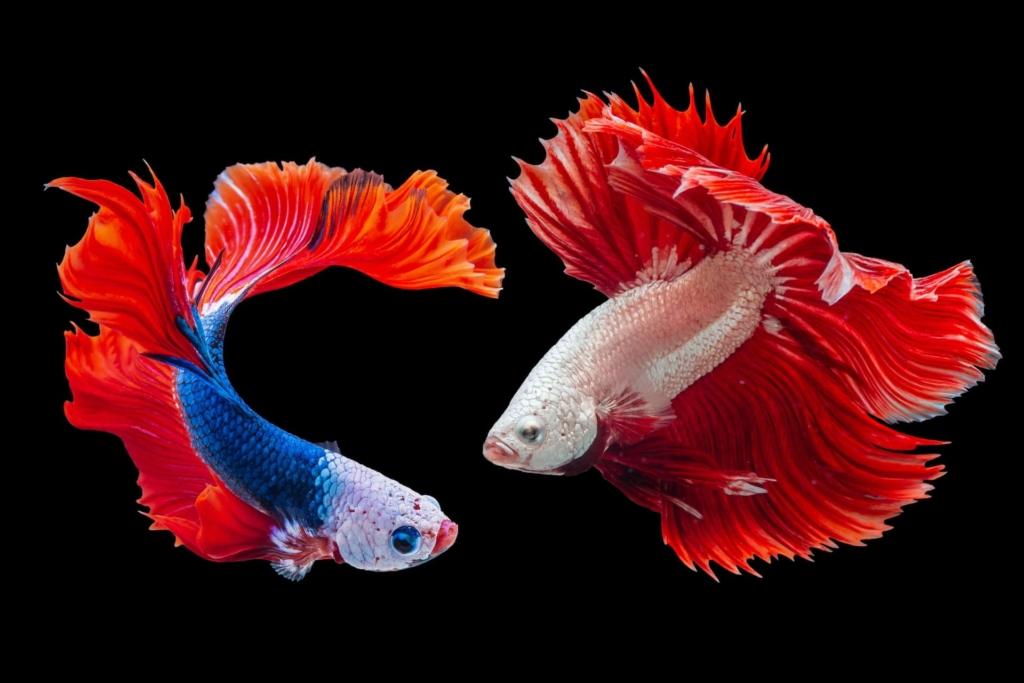


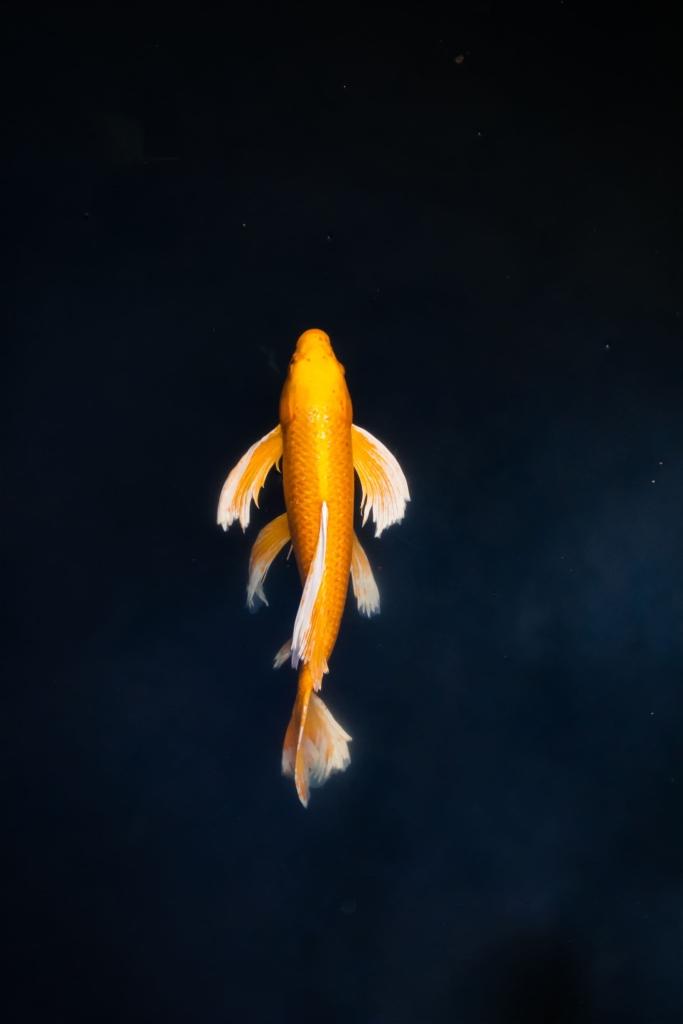










Care Tips for Fighter Fish
Taking proper care of Fighter Fish is essential for their well-being. Here are some care tips to ensure a healthy and happy life for your aquatic companions:
- Appropriate Tank Size: Provide a suitable tank with a minimum size of 5 gallons for one fighting Fish. Larger tanks offer more stability and space for fish to swim.
- Water Parameters: Maintain water temperature between 75-80°F (24-27°C) and a pH level around 6.5-7.5. Regular water changes (20-30% weekly) are crucial to keep water quality high.
- Filtration: Use a gentle filter to prevent strong currents that might stress the fish. Make sure the filter doesn’t create too much water movement.
- Decor and Hiding Spots: Include live or silk plants, caves, and broad leaves for resting and hiding. These features reduce stress and mimic their natural habitat.
- Lid or Cover: fighting Fish are known to jump, so use a secure lid to prevent them from leaping out of the tank.
- Tank Mates: Choose peaceful, non-fin-nipping species as tank mates. Avoid keeping multiple male fighting Fish in the same tank.
- Feeding: Offer a balanced diet of high-quality pellets, live or frozen foods like bloodworms, brine shrimp, and daphnia. Feed in small portions to avoid overfeeding.
- Feeding Schedule: Feed 2-3 times a day, only what your fish can consume in a few minutes.
- Bubble Nest Materials: Male fighting Fish may build bubble nests even without a female. Provide broad leaves or a Styrofoam cup at the water’s surface for nesting.
- Regular Observation: Observe your fish daily to spot any changes in behaviour, colour, or health. Early detection can prevent potential issues.
- Quarantine New Fish: When introducing new fish to the tank, quarantine them first to prevent the spread of diseases.
- Health Checks: Look out for signs of illness like lethargy, loss of appetite, abnormal swimming, or external symptoms like spots or fin damage.
- Disease Prevention: Maintain good water quality, avoid overfeeding, and provide a stress-free environment to reduce the risk of diseases.
- Medication: If necessary, treat illnesses with appropriate medications under the guidance of a veterinarian or experienced fishkeeper.

Health Issues of Fighter Fish
Taking proper care of Fighter Fish is essential for their well-being. Here are some care tips to ensure a healthy and happy life for your aquatic companions:
- Appropriate Tank Size: Provide a suitable tank with a minimum size of 5 gallons for one fighting Fish. Larger tanks offer more stability and space for fish to swim.
- Water Parameters: Maintain water temperature between 75-80°F (24-27°C) and a pH level around 6.5-7.5. Regular water changes (20-30% weekly) are crucial to keep water quality high.
- Filtration: Use a gentle filter to prevent strong currents that might stress the fish. Make sure the filter doesn’t create too much water movement.
- Decor and Hiding Spots: Include live or silk plants, caves, and broad leaves for resting and hiding. These features reduce stress and mimic their natural habitat.
- Lid or Cover: fighting Fish are known to jump, so use a secure lid to prevent them from leaping out of the tank.
- Tank Mates: Choose peaceful, non-fin-nipping species as tank mates. Avoid keeping multiple male fighting Fish in the same tank.
- Feeding: Offer a balanced diet of high-quality pellets, live or frozen foods like bloodworms, brine shrimp, and daphnia. Feed in small portions to avoid overfeeding.
- Feeding Schedule: Feed 2-3 times a day, only what your fish can consume in a few minutes.
- Bubble Nest Materials: Male fighting Fish may build bubble nests even without a female. Provide broad leaves or a Styrofoam cup at the water’s surface for nesting.
- Regular Observation: Observe your fish daily to spot any changes in behaviour, colour, or health. Early detection can prevent potential issues.
- Quarantine New Fish: When introducing new fish to the tank, quarantine them first to prevent the spread of diseases.
- Health Checks: Look out for signs of illness like lethargy, loss of appetite, abnormal swimming, or external symptoms like spots or fin damage.
- Disease Prevention: Maintain good water quality, avoid overfeeding, and provide a stress-free environment to reduce the risk of diseases.
- Medication: If necessary, treat illnesses with appropriate medications under the guidance of a veterinarian or experienced fishkeeper.
Fighter Fish Breeding
Breeding Fighter Fish can be a rewarding experience for aquarists. To successfully breed them, it’s important to create the right conditions. Introduce a male and female fighting Fish to a well-maintained breeding tank with suitable plants, floating materials, and gentle filtration. The male will build a bubble nest, and once the female displays vertical stripes, release her into the breeding tank. The male will embrace the female and lead her to the nest, fertilizing the eggs she releases. After this process, remove the female to prevent aggression. The male will guard the eggs and fry until they are free-swimming.
How To Breed Fighter Fish

Breeding Fighter Fish involves careful preparation and observation. Set up a separate breeding tank with conditioned water, temperature around 80-82°F (27-28°C), and gentle filtration. Introduce a male and female, and once the bubble nest is ready, introduce the female. After spawning, remove the female to prevent aggression. The male cares for the nest and fry. Feed the fry with infusoria, baby brine shrimp, and finely crushed pellets.
Fighter Fish Aquarium
A Fighter Fish aquarium should replicate their natural habitat. Use a tank of at least 5 gallons with proper filtration and heating. Include live or silk plants, hiding spots, and floating plants to provide cover. Maintain stable water parameters and keep the tank clean to ensure the health of your fish.
Fighter Fish Bowl
While larger tanks are preferable, Fighter Fish can be kept temporarily in bowls if maintained properly. Use a bowl of at least 2-3 gallons, provide regular water changes, a heater, and suitable decorations. However, a filtered and heated tank is a better long-term option.
Fighter Fish Eggs
After fertilization, Fighter Fish eggs stick to the bubble nest. The male tends to the eggs, ensuring they stay safe from predators. Once the eggs hatch, the male continues to guard and care for the fry.
Fighter Fish Size
Fighter Fish size varies by breed and gender. Males are generally larger, averaging 2.5 to 3 inches (6.5 to 7.5 cm) in length, while females are slightly smaller, around 2 to 2.5 inches (5 to 6.5 cm).
Fighter Fish Fight
Historically, fighting Fish were bred for their aggressive nature and used in fights. However, it’s important to avoid promoting fighting in the hobby. Keeping multiple male fighting Fish in the same tank can lead to aggression and stress.
Fighter Fish Life
The life of a Fighter Fish involves growth, interactions, and adapting to its environment. Providing proper care and suitable conditions contribute to their well-being and overall quality of life.
Fighter Fish Life Time
The average lifespan of a Fighter Fish is around 2-3 years. Proper care, nutrition, and a stress-free environment can extend their lifespan.
Siamese Fighter Fish Lifespan
The Siamese Fighter Fish (Betta splendens) generally has a lifespan of 2-3 years. By maintaining optimal care conditions, you can help ensure a healthier and longer life for these captivating aquatic companions.
Fighter Fish Food
Best fighting Fish Food:
| Food Type | Description |
|---|---|
| High-Quality Pellets | Balanced commercial pellets designed for fighting Fish. Choose ones with protein-rich content and minimal fillers. |
| Live or Frozen Foods | Offer bloodworms, brine shrimp, daphnia, and other small live or frozen foods to provide variety and mimic their natural diet. |
| Vegetables | Occasionally, offer blanched vegetables like peas for added nutrition. |
| Supplements | Vitamin and mineral supplements can help enhance their overall health and coloration. |
| Feeding Frequency | Feed 2-3 times daily in small portions that fish can consume in a few minutes. Avoid overfeeding. |
Fighter Fish Baby Food
Popular fighting Fish Baby Food:
| Food Type | Description |
|---|---|
| Infusoria | Tiny aquatic organisms like infusoria are suitable for very young fry during their early stages. |
| Microworms | Microworms are small live worms that provide essential nutrients for growing fry. |
| Baby Brine Shrimp | Newly hatched brine shrimp are a nutritious option for young fry, promoting growth and health. |
| Liquid Fry Food | Liquid fry food is specifically formulated to meet the nutritional needs of growing fry. |
| Frequency | Feed baby food multiple times a day, providing small amounts to ensure consistent growth. |
Fighter Fish Food Timing
fighting Fish Food Timing:
| Feeding Time | Description |
|---|---|
| Morning | Offer the first feeding in the morning to kickstart the day. |
| Afternoon | A midday feeding provides energy and sustenance. |
| Evening | Offer the last feeding in the evening before their rest. |
| Consistency | Stick to a consistent feeding schedule for healthy routines. |
Fighter Fish Video
Conclusion:
In conclusion, fighting Fish, also known as Betta splendens, add captivating vibrancy to aquariums with their stunning colours, unique fin shapes, and engaging behaviours, making them a favourite among hobbyists. Proper care is essential to their well-being, encompassing the right tank setup, balanced nutrition, and health monitoring. Whether you’re charmed by their breeding, intrigued by personalities, or captivated by aesthetics, fighting Fish offer a rewarding journey for all aquarists.
Frequently Asked Questions:
-
What size tank is best for Fighter Fish?
Fighter Fish thrive in tanks of at least 5 gallons. Providing a larger tank offers more space for swimming and reduces territorial behaviour.
-
How often should I feed my Fighter Fish?
Feed your fighting Fish 2-3 times daily, giving them only what they can consume in a few minutes to prevent overfeeding.
-
Can I keep multiple Fighter Fish together?
While females can sometimes coexist, it’s best to avoid keeping multiple male fighting Fish together as they can become aggressive.
-
What are the common signs of a healthy Fighter Fish?
A healthy fighting Fish will exhibit vibrant colours, active swimming, and an alert demeanour. They’ll also have clear eyes and fins, and they’ll respond to their surroundings.
-
How can I set up a proper Fighter Fish aquarium?
To set up a suitable fighting Fish aquarium, use a tank of at least 5 gallons, maintain stable water parameters (75-80°F, pH 6.5-7.5), add live plants, hiding spots, and gentle filtration.
-
Are Fighter Fish aggressive?
Male fighting Fish can be aggressive, especially towards other males. It’s best to keep them singly or with peaceful tank mates to prevent conflict.
-
What’s the average lifespan of Fighter Fish?
fighting Fish typically live around 2-3 years. Providing proper care and a stress-free environment can contribute to a longer lifespan.
-
Can I breed Fighter Fish at home?
Yes, you can breed fighting Fish at home. Creating a suitable breeding environment with proper conditions, such as a bubble nest and compatible pair, can lead to successful breeding.
-
What’s the significance of bubble nests for Fighter Fish?
Male fighting Fish build bubble nests to house their eggs. These nests, constructed from bubbles and saliva, serve as a safe place for the eggs until they hatch.
-
How do I choose suitable tank mates for Fighter Fish?
Opt for peaceful, non-fin-nipping species as tank mates for fighting Fish. Avoid aggressive or territorial fish that might trigger conflict.
-
Can I keep Fighter Fish in a bowl?
While possible for temporary housing, fighting Fish are better suited to properly filtered and heated tanks. Bowls lack the necessary space and conditions for long-term health.
-
What kind of food should I provide for fighting Fish?
Offer high-quality pellets, live or frozen foods like bloodworms and brine shrimp, and occasional treats like blanched vegetables to ensure a balanced diet.
-
How often should I change the water in my fighting Fish tank?
Perform regular water changes of 20-30% weekly to maintain good water quality. Consistent water changes contribute to the health of your fish.
-
Can Fighter Fish recognize their owners?
While not as interactive as some pets, Fighter Fish can become familiar with their owners’ presence and routines over time.
-
Are Fighter Fish good for beginners in the fishkeeping hobby?
Yes, Fighter Fish can be suitable for beginners due to their manageable size and care requirements. Proper research and care will help ensure a positive experience.
Recommended –
Guppy Fish | Price, 10 Rare Species, Care Tips, Colours, Facts, Health
Dove Birds | History, 4 Types, Pigeons, Price, Facts, Care Tips, Health

























